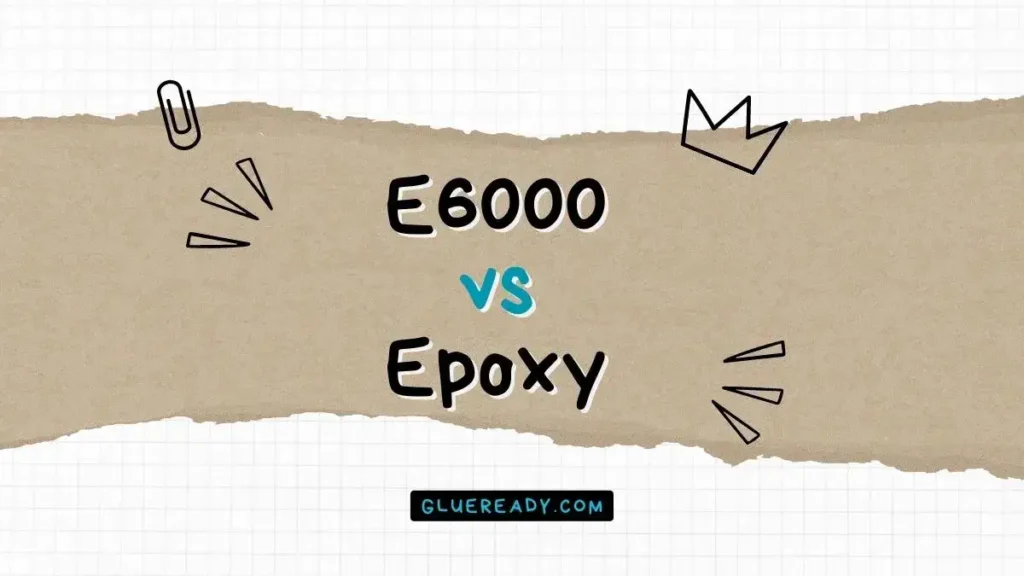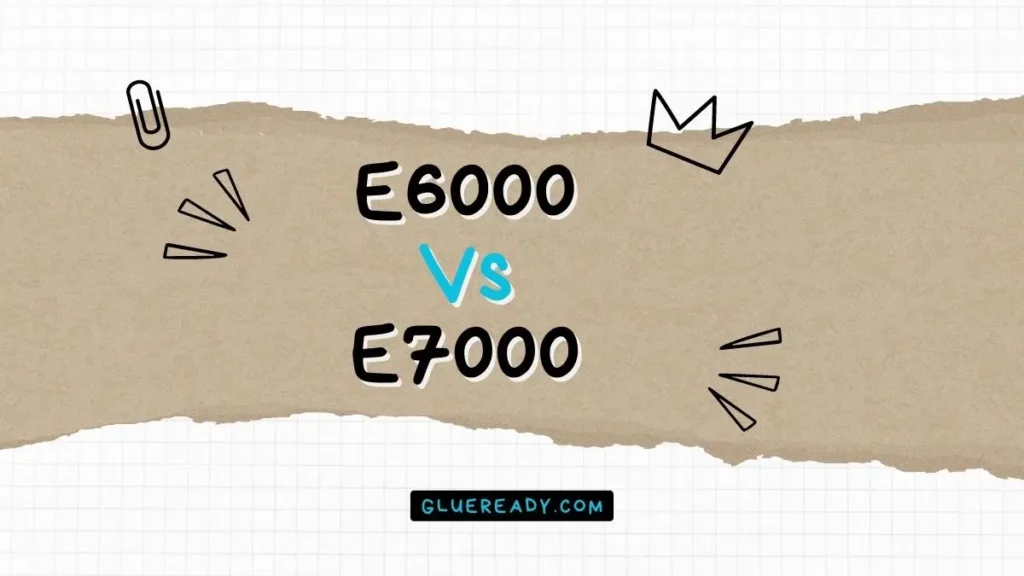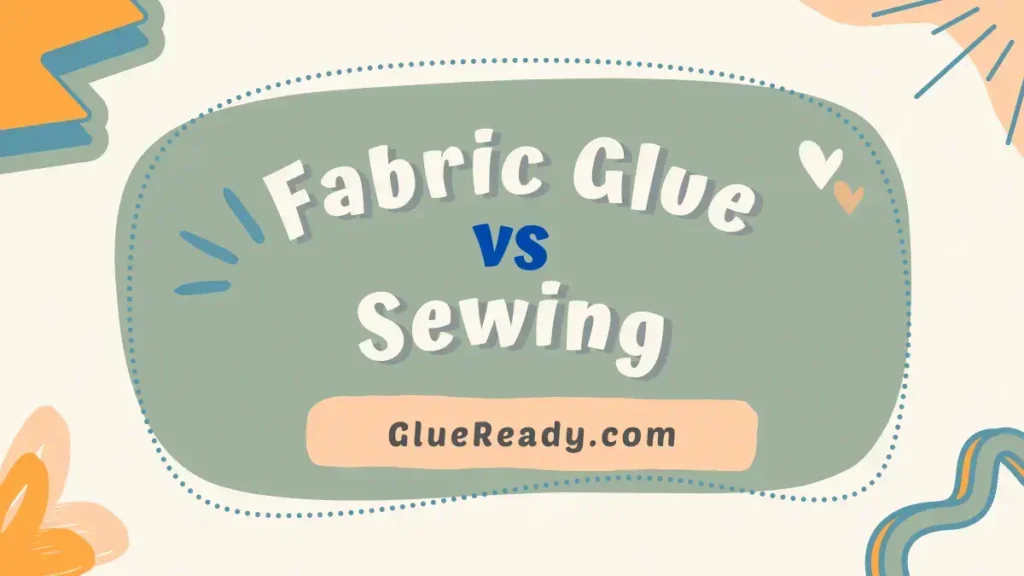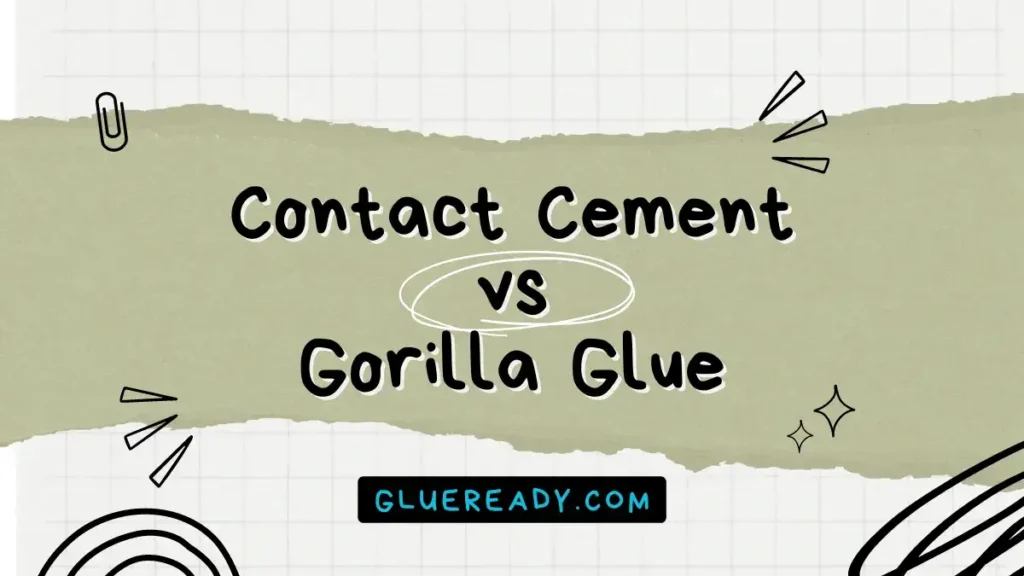527 Glue vs E6000 | Which One Is Better?

527 glue is a thin and clear adhesive that has a quick-drying formula. It is ideal for home decor and household appliances. E6000 glue is a thick and paintable adhesive that has a long-lasting formula. It is ideal for heavy-duty work.
To give you an extensive overview of them, I compared 527 Glue vs E6000 in this article. Let’s get started!
Know More: Hot Glue vs Gorilla Glue
What Is 527 Glue?
527 glue is a multi-purpose glue that is made of ethyl cyanoacrylate. It is a clear and thin adhesive that can bond to any material, such as wood, paper, glass, plastic, leather, cork, tile, gems, etc.
It is ideal for household applications, home decor, yard, and crafting projects. It has a quick-drying formula that takes around 2 hours to dry completely and 24 hours to reach its maximum strength.
It is also water-resistant and weather-proof, making it suitable for indoor and outdoor use.

Pros and Cons of 527 Glue
Pros:
- It can bond to any material
- It dries fast and clear
- It does not need clamping
- Easy to control in small spaces
Cons:
- It is not washer safe
- It is not paintable
- It may not withstand high temperatures
What Is E6000 Glue?
E6000 glue is an industrial-strength glue that is made of epoxy resin. It is a thick and opaque adhesive that can bond to many materials, such as metal, wood, glass, leather, vinyl, plastics, rubber, masonry, concrete, etc.
It also sticks to leather, vinyl, plastics, and rubber. It is ideal for heavy-duty projects that require a strong and flexible bond.
It has a slow-drying formula that takes 2 minutes to get tacky and 24-72 hours to reach its full strength.
It is also non-flammable, waterproof, washable, and paintable. High temperatures and harsh conditions are no problem for it.

Pros and Cons of E6000 Glue
Pros:
- It is strong, durable, and shock resistant
- It is waterproof, washer safe, and paintable
- It can withstand high temperatures
- It does not need clamping
Cons:
- It is thick and hard to control in tight spots
- It takes a long time to dry and cure
- It has a strong odor and may be harmful if inhaled
- It may discolor or become yellow over time
527 Glue vs E6000 Comparison Table
| Feature | 527 Glue | E6000 Adhesive |
| Type | Multi-Purpose Adhesive | Industrial-Strength Adhesive |
| Thickness | Thin | Thick |
| Handling Time | 2 hours | 10 minutes |
| Full Cure Time | 24 hours | 24-72 hours |
| Color | Clear | Paintable |
| Temperature Resistance | Moderate | High |
| Water-resistant | Yes | Yes |
| Ideal for | Plastic, leather, paper, cork, shells, glass, wood, gems, tile, and more | Wood, glass, metal, ceramics, fiberglass, concrete, masonry, leather, vinyl, plastics, and rubber |
How To Choose Between 527 Glue and E6000 Glue?
The choice between 527 glue and E6000 glue depends on your project’s requirements and preferences.
Here are some factors to consider when choosing the best glue for your project:
Type of Material
If you want to bond different types of materials together, you might want to choose 527 Glue, as it can bond to any material.
If you want to bond specific types of materials together, you might want to choose E6000 glue, as it can bond to many materials but not all.

Size of The Area
If you want to bond small or intricate areas together, you might want to choose 527 Glue, as it is easy to apply and control in small spaces.
If you want to bond large or flat areas together, you might want to choose E6000 glue, as it is strong and flexible.
Drying Time
If you want a fast-drying glue that sets in 2 hours and is fully cured within 24 hours, you might want to choose 527 Glue.
If you don’t mind a slow-drying glue that takes up to 72 hours to reach its full strength, you might want to choose E6000 glue.
Appearance You Want
If you want a clear and invisible glue that does not leave any marks or residue, you might want to choose 527 Gue.
If you don’t mind an opaque and visible glue that may leave some marks or residue, you might want to choose E6000 glue.
Know More: E6000 vs E7000
Frequently Asked Questions (FAQs)
How Strong Is 527 Glue?
527 glue is a strong adhesive that can bond to a variety of materials. It is durable, strong, water-resistant, and flexible.
What Is the Difference Between E6000 and 527 Glue?
527 glue is thinner and easier to control in small spaces than E6000. In comparison, E6000 glue is thicker and harder to control in small places but can be applied with a toothpick.
How Long Does It Take For 527 Glue to Dry?
It takes around 2 hours for 527 glue to dry properly, but it takes 24 hours for it to reach its maximum strength.
Is 527 Glue Waterproof?
Yes, 527 glue is water-resistant.
Final Thoughts
Both 527 glue and E6000 glue are strong and versatile adhesives that can bond to a variety of materials. However, they have some differences in their features, pros, cons, and applications.
Depending on your project’s requirements and preferences, you can choose the best glue for your project.
I hope this article has helped you compare 527 glue vs E6000 glue and make an informed decision.







